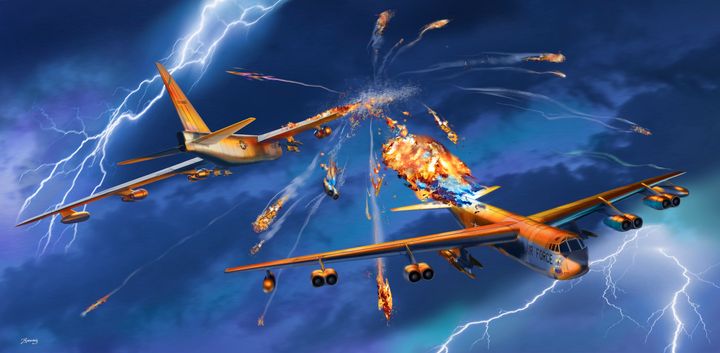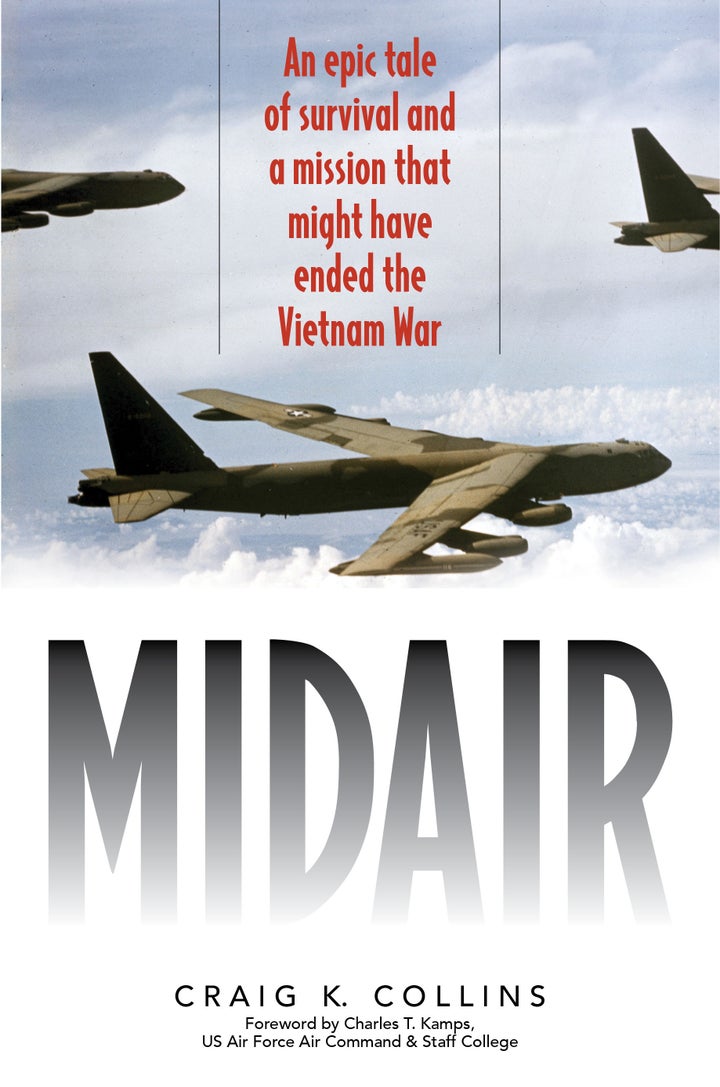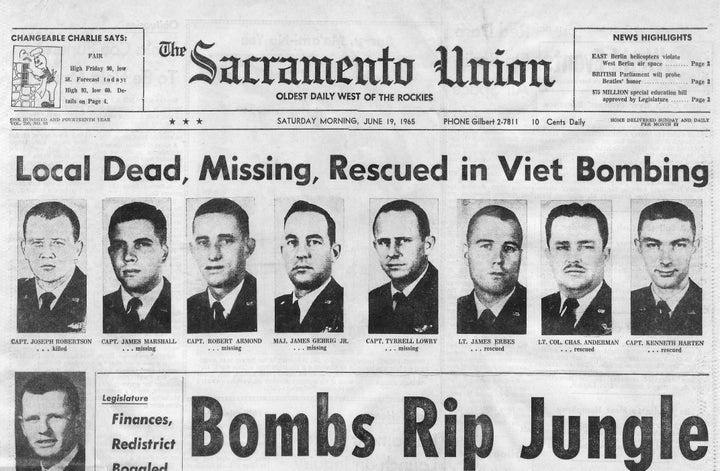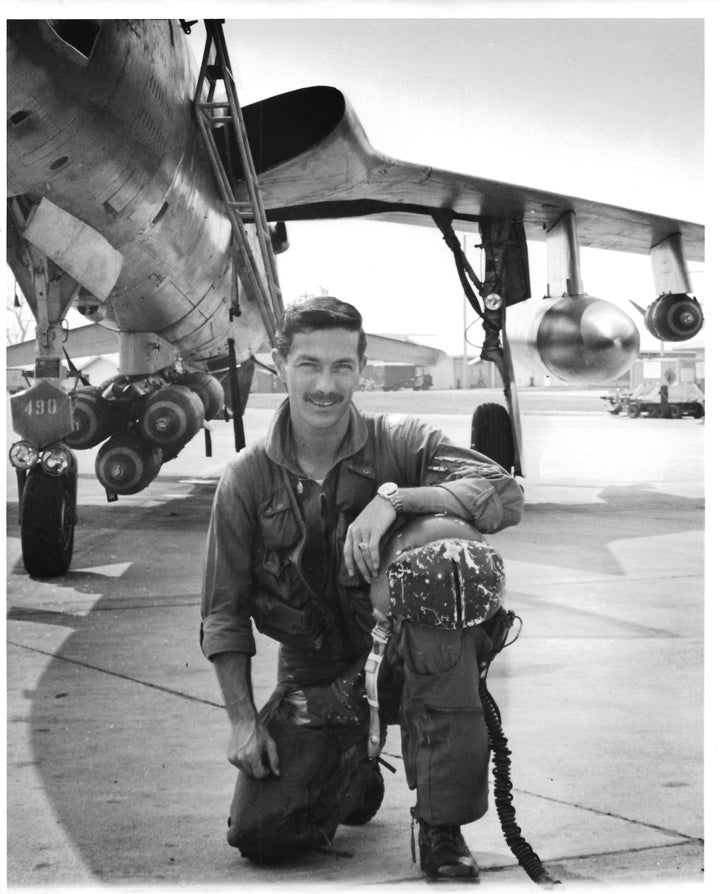
The annals of aviation are replete with near-miraculous stories of survival.
There is, of course, Capt. Chesley Sullenberger, who flew into a flock of geese in 2009 and through quick thinking, years of experience and nerves of steel, managed to safely ditch his dead-engine Airbus A320 into the Hudson River, saving all aboard.
And there is Juliane Koepcke, who in 1971, at age 17, fell 10,000 feet to earth after her plane was struck by lightening and then ripped asunder by a particularly violent storm over Peru. Strapped to a row of chairs, she “helicoptered” into the Amazonian rainforest, the jungle canopy breaking her fall, after which she walked for ten days before encountering some lumbermen who canoed her back to civilization.
But for my money, the most remarkable of all may be that of my uncle Don Harten, who as a young lieutenant co-pilot on June 18, 1965, managed to survive a head-on collision at 30,000 feet between two bomb- and fuel-laden B-52s, each about the size of a 747 and each traveling about 500 mph, during a nighttime aerial refueling maneuver above the South China Sea.
Harten was on the venerable B-52’s inaugural bombing mission, a 5,000-mile round trip from Andersen Air Base, Guam, to what was described as a Vietcong jungle stronghold 28 miles northwest of Saigon (though it would later turn out to be an abandoned Michelin rubber plantation devoid of any enemy activity whatsoever – a portent of things to come in the Vietnam War if there ever were one.) Traveling in a miles-long 30-bomber formation comprised of ten cells of three B-52s each, Harten arrived nine minutes early for his scheduled rendezvous with a KC-135 tanker jet southwest of the Philippines’ Luzon Peninsula.
He was told by his navigator to roll into a 360-degree turn to burn off the extra nine minutes.
As he initiated the maneuver, he radioed to the navigator, located on the deck below him in the behemoth plane.
“Radar,” Harten said, “You do realize that if there’s another cell four minutes behind and on the south track, there’s a good chance we’ll pass by them head on?”
“Rog,” said the navigator, “so keep your eyes open.”
“Keep your eyes open?” Harten thought to himself, startled. “This is the worst maneuver ever.”
But his rank and the chain-of-command dictated that he follow orders.
Which he did.
Four minutes later, he spotted the oncoming lights of another three-plane B-52 cell approaching head-on. With a closing speed of over 1,000 mph, there was almost no time to react.
The oncoming B-52 dove just beneath Harten’s jet, nearly avoiding a collision. But its 4-story-high vertical stabilizer, or tail, protruded enough to slice off the outer third of Harten’s right wing, sparking the detonation of a fuel tank, which in turn blew off the entire wing.
The oncoming B-52, shorn of its vertical stabilizer, went into a flat spin before failing catastrophically and blooming into a massive fireball that could be seen by trailing B-52s from more than 200 miles away in the night sky. Only one of six crew members from that plane would survive.
Harten would eject perhaps three seconds before his jet exploded a few hundred yards beneath him, its fiery remains plunging into the South China Sea. Two other crew members from that plane, along with Harten, would survive.
It was the first story I ever told in public, at the age of five in the fall of 1965, to a rapt audience of fellow kindergartners during show-and-tell, me with a plastic model of a B-52 and an accompanying front-page account of the incident for props. I was amazed by the tale then, and have grown ever more amazed as the years pass, enough so that it is the central drama of my latest book, Midair (Lyons Press, 2016.)
No other such story has the historical gravitas. Harten was on the B-52’s very first combat mission, one that would plunge America deeply and irrevocably into the Vietnam War.
Few stories have the death-defying, million-to-one odds of survival. Harten is likely the only living pilot to have survived a high-altitude, catastrophic jet collision, and one of the very few in the history of aviation to have successfully ejected at an extreme altitude and high velocity.
Few tales contain as much true-life, adrenaline-soaked terror. Harten’s problems were just starting when he left his B-52 cockpit. The collision occurred above Super Typhoon Dinah, a Category 5 monster, the fourth-largest typhoon on record in the 20th century, with top winds of 185 mph and waves of 30 to 70 feet. He and his three surviving comrades are surely the only people to have ever survived a parachute drop into a Category 5 storm.
Few stories involve such a steady avalanche of trauma, most any single of which would rank among the top 10 of nearly every individual’s worst phobias: a fiery plane crash, free fall, typhoon, mountainous waves, lost at sea, and open ocean. Oh, yes, and to top it off, there was the small detail of sitting solo in a life raft about the size of a very small bathtub, retching from sea sickness and bleeding from a shrapnel-cut leg – essentially, chumming for sharks, which, on cue, showed up en masse, as the seas calmed and the storm moved north, their huge fins slicing circles through the water around the laughably small inflatable, drawn by the powerful lure of vomit and blood. That Harten’s amphibious rescue plane, an HU-16 Albatross, crashed back into the ocean just after scooping up the four survivors – as ridiculously implausible as that even sounds – was perhaps almost inevitable given the previous chain of events.
So how does one survive such an onslaught of bad luck?
“You just take what the good lord gives you and work with it,” says Harten, now 78, from his home in Las Vegas. “And sometimes he doesn’t give you much.”
No, sometimes he doesn’t. Certainly not on June 18, 1965.
“Panic, though, is the real killer. And I never panicked. Not once. I just remembered my training, played it as smart as I could and took everything one at a time as it came.”
Easier said than done, of course.
“There were at least a dozen different ways I could’ve died through the ordeal. It seemed as though every single thing was conspiring to kill me. There was the collision itself. My ejection button failed on the first three tries. I was swinging so hard from my parachute on the way down, it almost became tangled into a useless ball. When I landed in the ocean, I was dragged by the winds across the water in my chute at probably more than 100 mph. I’m fairly certain I set the world speed record for water skiing. That almost killed me, for sure. The waves, as big as five-story buildings, were relentless and horrific. I had no food or water – that compartment of my survival gear got torn off in the ejection. And the way I was losing fluids due to sea sickness, I figured I had only another 24 hours in me, if that. It was a miracle we were found so quickly. The rescue plane crash was almost beyond my ability to comprehend. But for sheer terror, there’s nothing quite like a three-foot high fin passing so close you could reach out and touch it. If that doesn’t get your attention, nothing will. And for me, I’d prefer death by just about anything other than a shark.”
But what to me is most remarkable about Harten’s story is what he did after his ordeal. He immediately got back into a plane and flew. And flew and flew and flew.
He is the only living pilot who was in the Vietnam theater of war from the very first bomb dropped in February 1965 to the very last in December 1972. He flew a remarkable 319 combat missions over five tours of duty in Vietnam and is the only pilot to have ever flown the B-52, F-105 and F-111 in combat.
“Why?” I asked him.
“I loved flying combat,” he said. “I loved it more than life itself. There’s nothing – and I mean nothing – in any of man’s pursuits that compares. To be in the cockpit of a supersonic war machine. To have to outthink and outsmart a ruthless enemy who wants you killed. To watch the world rushing by beneath you. To pull several g’s and make an aerial maneuver that maybe only one or two other people in the world could accomplish. To live every day on the edge of death so you have such a huge appreciation for life. There’s nothing really like it. Nothing at all. If I could go relive it all over again, I would in a heartbeat – even if it meant I had to go through another B-52 crash. I’d do it gladly just for a chance to fly combat again.”
Here he pauses wistfully, before furrowing his brow and adding: “But I still hate sharks.”



